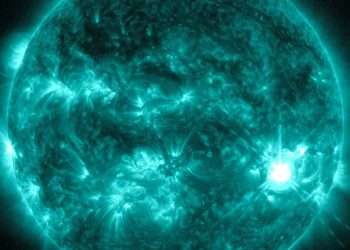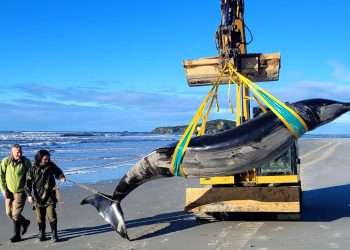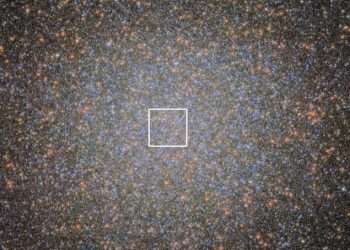SCIENTISTS have discovered a unique, fluffy exoplanet that is 50% bigger than Jupiter over a thousand light-years away.
The exoplanet, named WASP-193b, has an extremely low density that researchers compared to cotton candy.

Scientists have discovered a new exoplanet that is 50% bigger than Jupiter but has an extremely low density[/caption]

To observe how big WASP-193b was, scientists measured how much star light the planet covered when it orbited[/caption]
“Its extremely low density makes it a real anomaly among the more than five thousand exoplanets discovered to date,” explained Khalid Barkaoui, a postdoctoral researcher at the University of Liège EXOTIC Laboratory, according to EurekAlert!.
“This extremely low density cannot be reproduced by standard models of irradiated gas giants, even under the unrealistic assumption of a coreless structure.”
It was found by the Wide Angle Search for Planets, which uses wide-angle cameras to measure the brightness across stars in the sky, by researchers from the EXOTIC Laboratory of the University of Liège, Massachusetts Institute of Technology, and the Astrophysics Institute of Andalusia.
Scientists believe that its low density is because it is made up of hydrogen and helium, according to EurekAlert!.
“The planet is so light that it’s difficult to think of an analogous, solid-state material,” said planetary scientist Julien de Wit from the Massachusetts Institute of Technology, according to EurekAlert!.
“The reason why it’s close to cotton candy is because both are pretty much air. The planet is basically super fluffy.”
This is the second least dense planet discovered after Kepler 51d, which was found in 2014, and is smaller than WASP-193b, according to Barkaoui.
The new exoplanet is believed to be so light it could float on water, according to Sky News.
It orbits a star similar to the Sun, a little over every six days, over 1,200 light years away and is thought to be six billion years old.
DENSITY DISCOVERY
Data from the planet was collected between 2006 and 2008 and again from 2011 to 2012 by the WASP located in the southern hemisphere.
Astronomers believed that the dips in brightness over time aligned with a planet passing in front of a star every 6.25 days.
By measuring the amount of light the planet blocked, researchers were able to determine its size.
They also used spectroscopic observations to measure the mass of the planet, revealing that it was extremely low.
Scientists calculated that its mass and size were about 0.14 and 1.5 that of Jupiter, respectively.
What is an exoplanet?
Here's what you need to know…
- An exoplanet is a planet that is located outside of our solar system and is orbiting its own star, like how Earth orbits the Sun
- They are very hard to see with telescopes because they are often hidden by the brightness of their star
- Nasa sent the Kepler space telescope into orbit to find Earth-sized exoplanets that might support life
- Over 5,500 exoplanets have been discovered so far, and more missions to find even more exoplanets are planned
- A good way to spot an exoplanet is to look for wobbly stars, because a disruption to starlight can indicate that a planet is orbiting it and therefore blocking out light on occasion
- Exoplanets are very common in the universe, and the more we find that look like Earth, the closer we get to knowing whether we’re alone out there
Its density was found to be about 0.059 grams per cubic centimeter, which is drastically less than other planets, per EurekAlert!.
Comparatively, Jupiter’s density is about 1.33 grams per cubic centimeter, while Earth’s is 5.51 grams per cubic centimeter.
A material on Earth that we can compare to this new planet’s density is cotton candy, which has a density of about 0.05 grams per cubic centimeter.
Researchers speculate that the heat the star it orbits could be making its atmosphere puff out.
“WASP-193b is a cosmic mystery. Solving it will require some more observational and theoretical work, notably to measure its atmospheric properties with the JWST space telescope and to confront them to different theoretical mechanisms that possibly result in such an extreme inflation”, Barkaoui concluded.
The discovery of the cotton candy planet comes only days after scientists revealed that a fiery “super-Earth” planet known as 55 Cancri e may have a rich atmosphere.

WASP-193b over 1,200 light years away and is thought to be six billion years old[/caption]

The density of cotton candy is how scientists conveyed the density of the new planet[/caption]
Source link
































